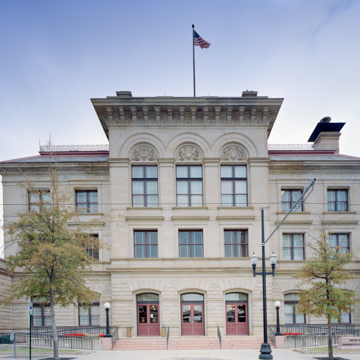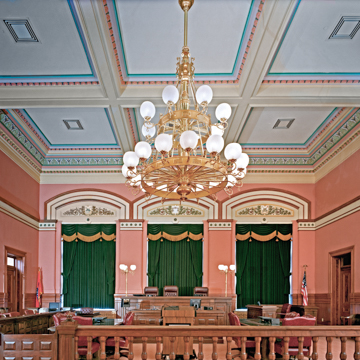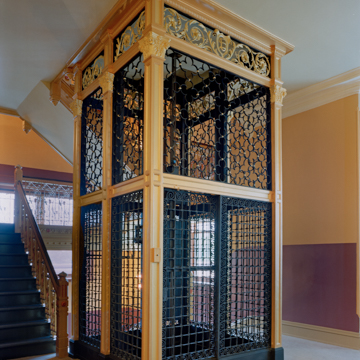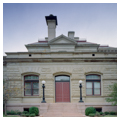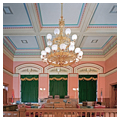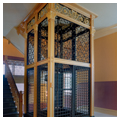Built of sandstone on a pink Indiana granite base, the U.S. Bankruptcy Courthouse is Italianate in style, with a rusticated base, round-arched third-floor windows with tympana filled with foliate ornamentation, and large brackets under the deep eaves. When it opened in 1881, the first floor of the building was used by the post office, the second floor by various government offices, and the third and fourth floors by the U.S. District Court. The first addition was built in 1897, when more office and mail-sorting space and a larger court-room were needed, followed by a second addition in 1908 to accommodate yet more mail. Both additions were in the same style as the original structure. After the post office moved to a new location (PU18) in 1932, this building continued to be used for government offices until it was declared surplus federal property in 1975, after which the University of Arkansas used it until 1992. In 1997, with further renovation and expansion, this time in steel and glass, the building was returned to federal service as the U.S. Bankruptcy Courthouse. Of particular note is its elaborate elevator, which has an intricate wrought-iron cage and passenger compartment and was one of the first elevators installed in Arkansas.
You are here
U.S. Bankruptcy Courthouse (Old Federal Building)
1876–1881, James G. Hill, Supervising Architect of the U.S. Treasury; 1897, 1908 additions; 1997 renovations and additions, Witsell Evans Rasco. 300 W. 2nd St.
If SAH Archipedia has been useful to you, please consider supporting it.
SAH Archipedia tells the story of the United States through its buildings, landscapes, and cities. This freely available resource empowers the public with authoritative knowledge that deepens their understanding and appreciation of the built environment. But the Society of Architectural Historians, which created SAH Archipedia with University of Virginia Press, needs your support to maintain the high-caliber research, writing, photography, cartography, editing, design, and programming that make SAH Archipedia a trusted online resource available to all who value the history of place, heritage tourism, and learning.















